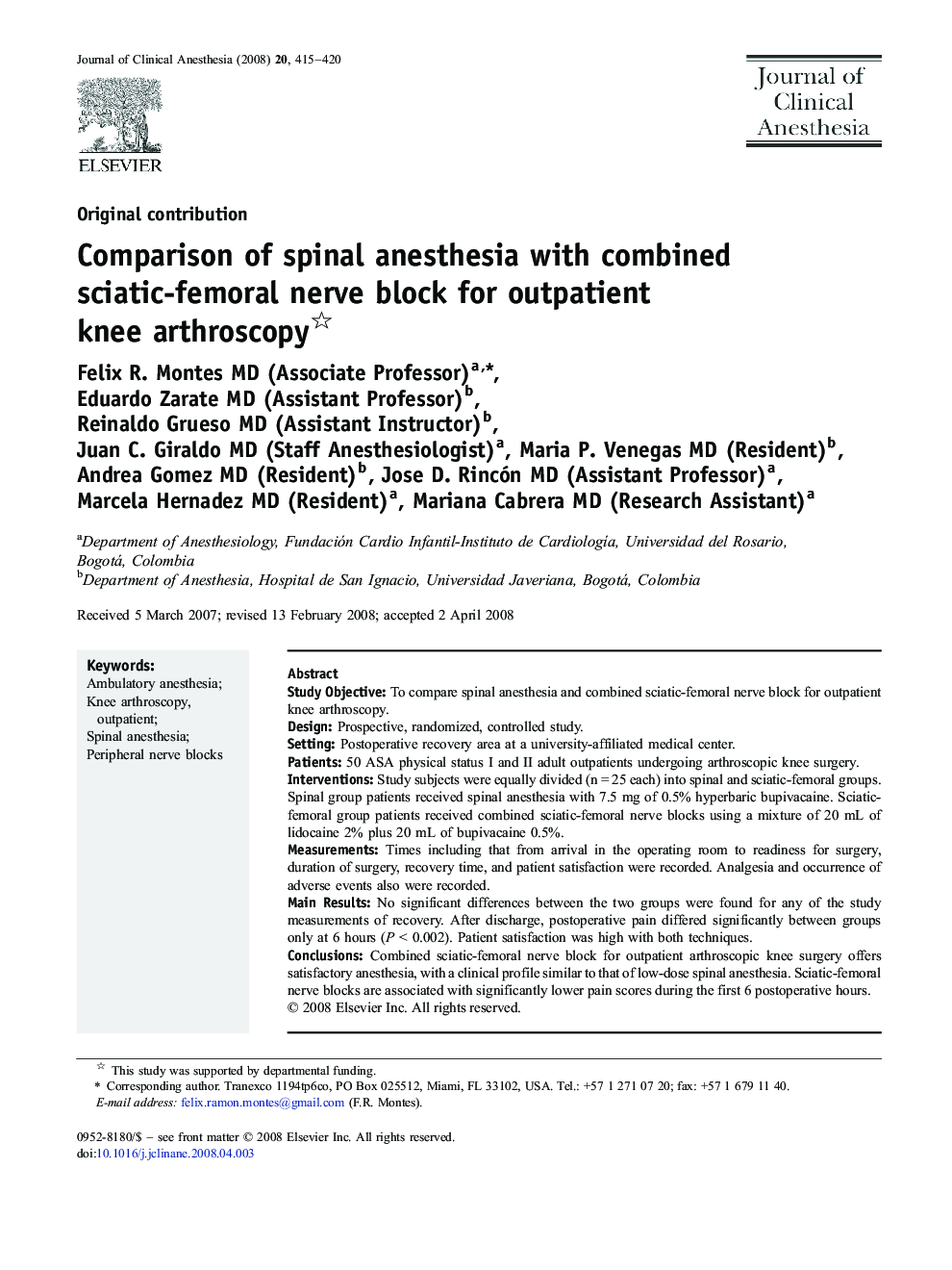| Article ID | Journal | Published Year | Pages | File Type |
|---|---|---|---|---|
| 2764139 | Journal of Clinical Anesthesia | 2008 | 6 Pages |
Study ObjectiveTo compare spinal anesthesia and combined sciatic-femoral nerve block for outpatient knee arthroscopy.DesignProspective, randomized, controlled study.SettingPostoperative recovery area at a university-affiliated medical center.Patients50 ASA physical status I and II adult outpatients undergoing arthroscopic knee surgery.InterventionsStudy subjects were equally divided (n = 25 each) into spinal and sciatic-femoral groups. Spinal group patients received spinal anesthesia with 7.5 mg of 0.5% hyperbaric bupivacaine. Sciatic-femoral group patients received combined sciatic-femoral nerve blocks using a mixture of 20 mL of lidocaine 2% plus 20 mL of bupivacaine 0.5%.MeasurementsTimes including that from arrival in the operating room to readiness for surgery, duration of surgery, recovery time, and patient satisfaction were recorded. Analgesia and occurrence of adverse events also were recorded.Main ResultsNo significant differences between the two groups were found for any of the study measurements of recovery. After discharge, postoperative pain differed significantly between groups only at 6 hours (P < 0.002). Patient satisfaction was high with both techniques.ConclusionsCombined sciatic-femoral nerve block for outpatient arthroscopic knee surgery offers satisfactory anesthesia, with a clinical profile similar to that of low-dose spinal anesthesia. Sciatic-femoral nerve blocks are associated with significantly lower pain scores during the first 6 postoperative hours.
